Unit Measurements
To be able to design speakers, accurate unit measurements are needed. The units should be measured inside their cabinet, to include the effects of the enclosure which will have an effect on the low-frequency response (baffle-step) and the position of the low-frequency peaks of the impedance curve for the woofer and the midrange. The following curves have been obtained in an anechoic room. For details about these curves, look at the anechoic measurement page.Amplitude and phase
Tweeter: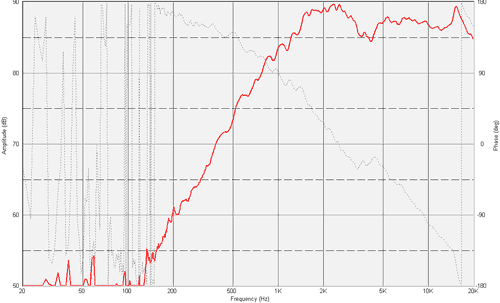
Midrange:
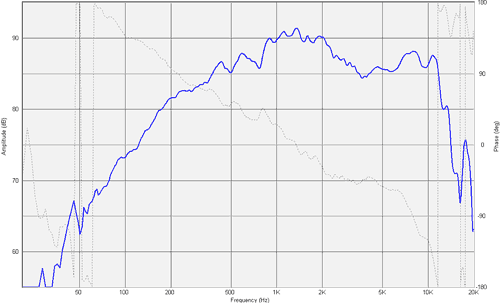
Woofer:
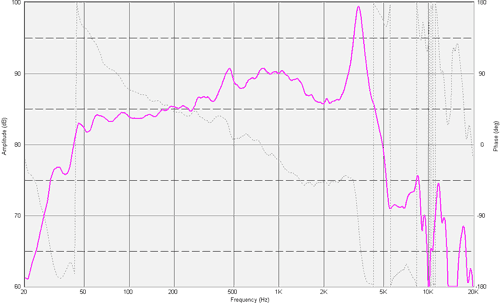
All in one curve:
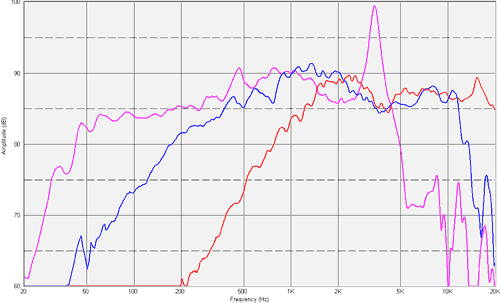
The tweeter has a dip around 4kHz due to diffractions against its own enclosure (supported by near-field measurements). It has a slight increase around 2kHz, and probably it is a good idea to start filtering on the slope between 2 and 3 kHz. The midrange seems to have a usable range from 100Hz to 3kHz. The woofer has a moderate 84dB efficiency at low frequencies. It has an increased efficiency from 400Hz to 2kHz, and compensation is required if this range is part of the operating range. The peak at 3.5kHz should be prevented as much as possible. The distortion figures (shown later on this page) even show that this peak is addressed as 3rd harmonic distortion around 1.2kHz.
Felt - no felt
The following curves show the difference between the units measured with felt on the baffle (bold line), and no felt applied to the baffle (normal line).Tweeter:
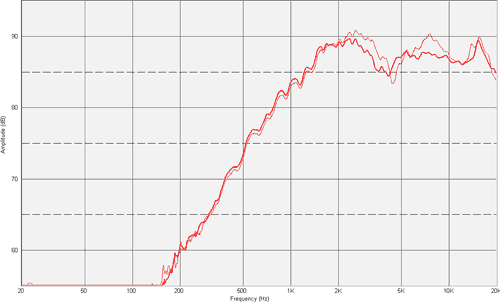
Midrange:
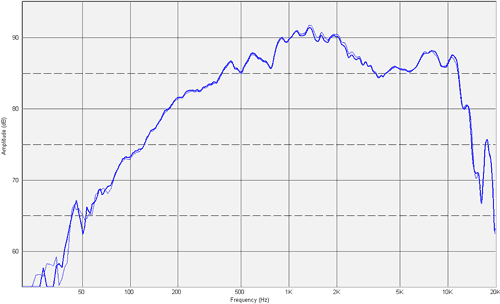
Felt has hardly any effect on the response of the midrange unit, but a significant effect on the response of the tweeter, as already shown in the acoustic stage. The positive effect of felt is supported by audible tests.
Angled curves 0 - 15 - 30 degrees
Tweeter: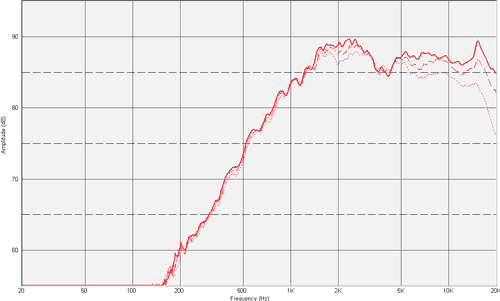
Tweeter with no felt:

Midrange:

The tweeter has a wide radiation pattern. The midrange unit starts to seriously drop in level after 4kHz. It should preferably not be used beyond 3kHz, otherwise bundeling effects will become audible, resulting in changes in the perceived frequency response.
Harmonic Distortion
Tweeter: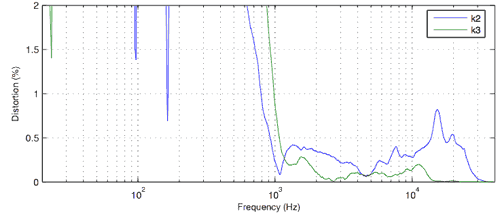
Midrange:
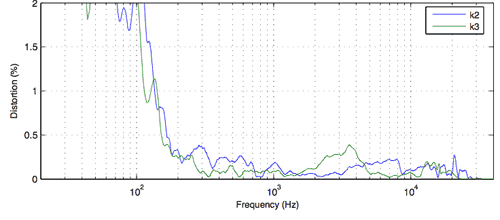
Woofer:
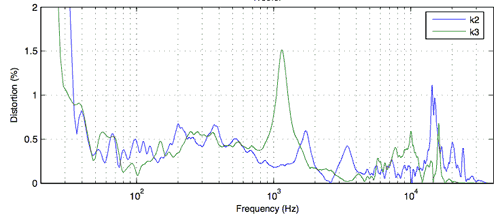
Distortion shows that the tweeter should not be used below 1kHz, and should be attenuated seriously, hinting at a 4th-order filter. Identically, the midrange unit should not be used below 200Hz. The breakup of the woofer around 3.5kHz is already excited by third harmonic distortion around 1.2kHz. Hence, the woofer should already be significantly attenuated at 1kHz.
Waterfall
Waterfall diagrams are very sensitive to the processing being applied. Many of them are limited in the lower frequencies, as the FFT window needs to become large, becoming sensitive to reflections in the measurement. Furthermore, the depth is often limited to say 30dBs, as one reaches the noise floor of the measurements. Because we have have been measuring in an anechoic room, we can increase the resolution. We've used:- 100ms sliding window,
- 1ms window risetime,
- 50ms window decay time
- -40dB noiselevel
You can click on the waterfall diagram to obtain a larger figure of the waterfall in a new window. For comparison, we've also added more traditional waterfall diagrams (brighter colored for clarity).
Tweeter
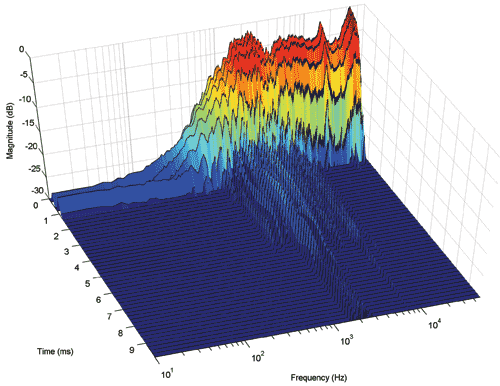
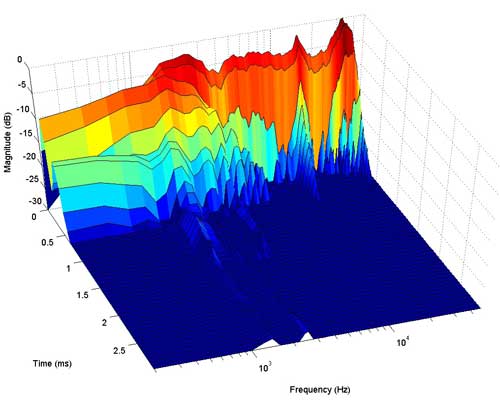
Midrange
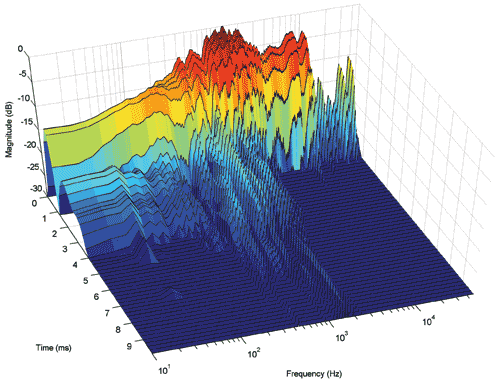
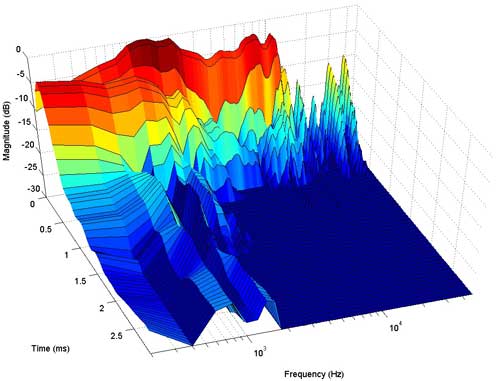
Woofer
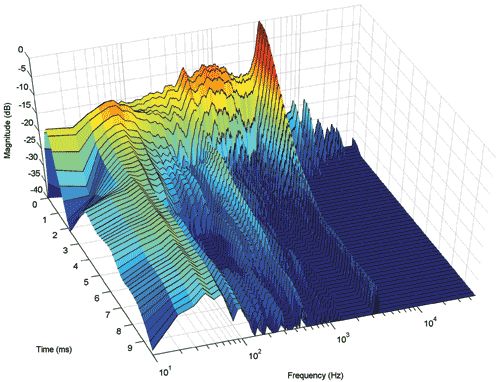
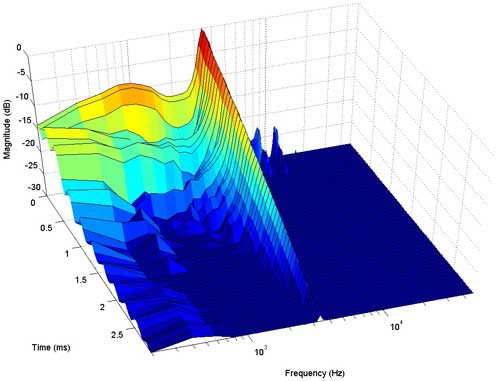
Besides the breakup peak of the woofer, the waterfall shows very little resonances.
Impedance
Tweeter: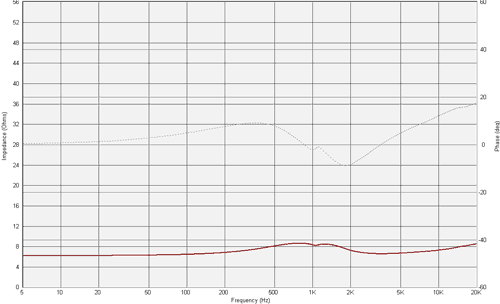
Midrange:
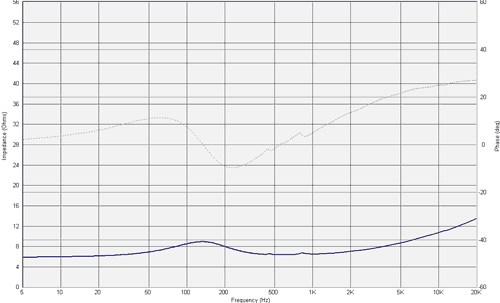
Woofer:
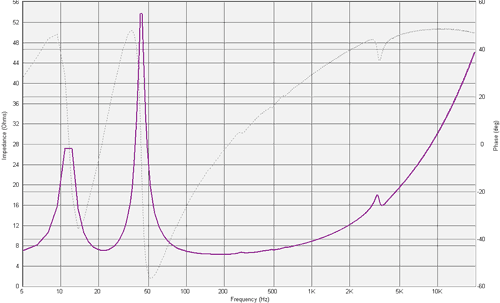
The impedance curves show some minor reflections inside the enclosure or breakups in the units. The woofer has a significant impedance peak, and if higher order filters with a low crossover point are applied, impedance corrections will be required.
Curve Availability
The curves based on the anechoic measurements are available in different formats on the curve download page.Additional curves
I have compared the anechoic measurements with curves and measurements from other sources. The (only!!!) purpose is to explain differences between simulations with these curves, and measured filter responses, as I (or others) have encountered with past filter designs (before February 2006). See the sub-pages for details on this topic.Extensive intermodulation distortion measurements can be found on a German forum.
Further information
- Introduction about MLS measurements and FFTs.- Stereophile article about measuring loudspeakers, and the relation to subjective performance
- Mathematical background and tips about MLS, impulse response and FFTs.
- Article attempting to connect subjective listening versus objective measuring.
next->